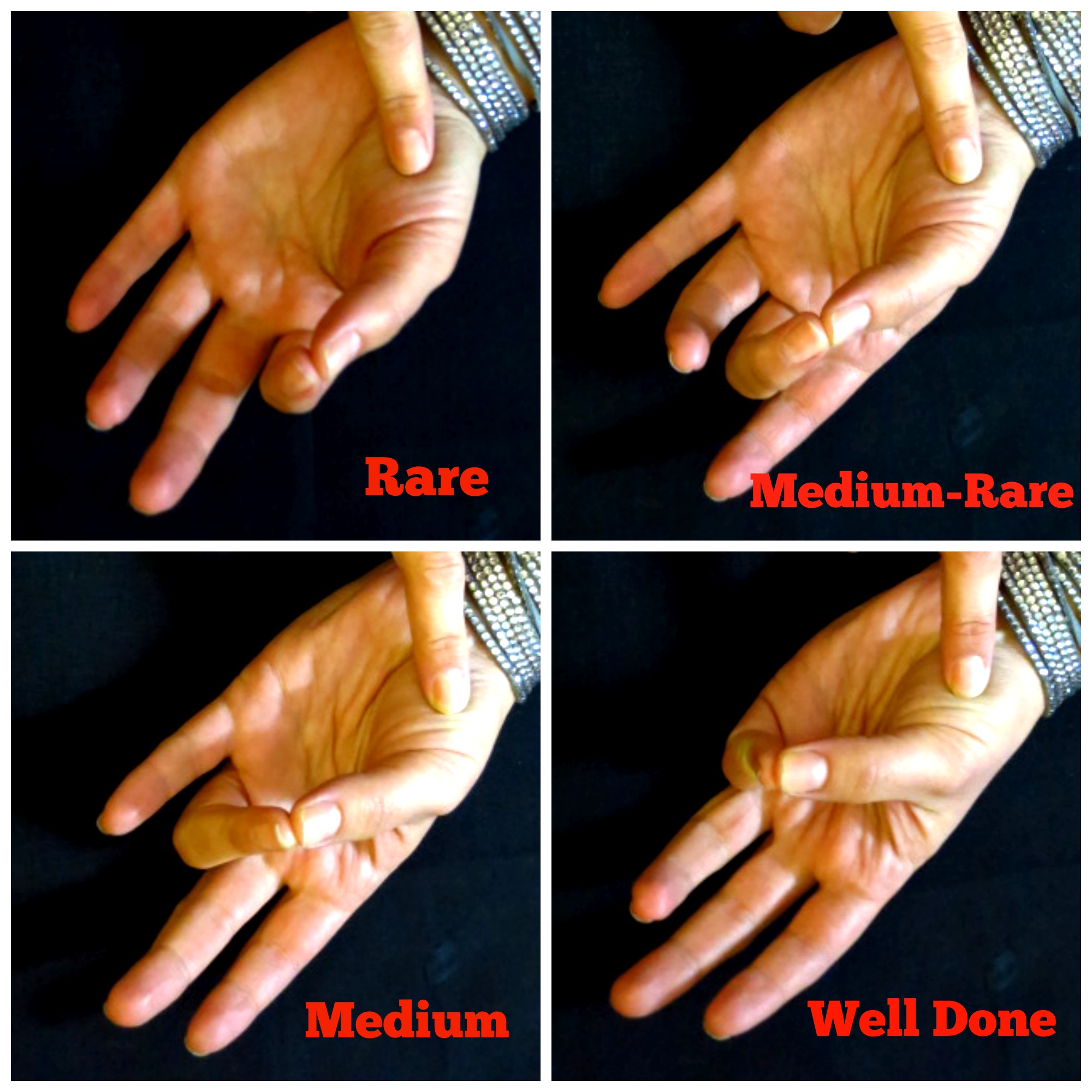“Oh, go ahead and guesstimate when it’s done. It’s just a $100 prime rib roast.” said nobody, ever. Pitfalls with beef cooking temperatures abound: you can’t see if you’ve achieved the perfect degree of doneness until you cut into the meat, and to complicate matters even more, everyone likes their beef cooked a little differently.
Even the seasoned cooks among us sometimes find ourselves breaking into a sweat when entrusted with proper culinary techniques when it comes to cooking steaks, roasts, burgers and other beloved cuts of beef. Here’s how to get it right and perfect the art of properly cooked beef.
Photo via the Craftsy class Roasting Techniques Every Cook Should Know
6 tips for how to master beef cooking temperatures
1. Don’t be a slave to the timer.
Use the cooking time suggested by your recipe as a basic guideline, but don’t treat it as gospel. The amount of cooking time your meat needs in order to reach perfection is determined by variables such as the thickness of the meat, the exact temperature of your grill or oven and the internal temperature of the meat BEFORE you started cooking it.
Always start checking the meat for doneness before the suggested cooking time is up.
2. All hail the instant-read thermometer.
The only way to be sure your beef is cooked to your ideal doneness is to take its internal temperature. It is absolutely worth your money to buy a good quality instant-read thermometer. It will pay for itself many times over, every time you present a perfectly cooked roast, steak, or burger to your adoring guests.
3. Don’t forget about carry-over cooking.
The internal temperature of your beef will continue to rise even after you remove it from the heat. For a thick cut, such as a roast, the temperature will rise as much as 10° Ft. For a thinner cut, such as a steak or burger, the temperature will rise about 5° F.
After removing the meat from the oven, grill or pan, loosely tent it with foil. Allow it to rest about 15 minutes while the temperature continues to rise, and the precious juices return to the center.
Take the carryover cooking into account with the chart below. These are the ideal final temperatures, so subtract 5 to 10° F, depending on the thickness of the meat. The temperature will rise as the meat rests.
4. Be familiar with beef cooking temperatures for specific types of “doneness.”
- Rare (barely-warm, raw-looking center): 120 to 125 F
- Medium-Rare (warm, red center): 125 to 130 F
- Medium (pink, firm center): 130 to 140 F
- Medium-Well (line of pink through center): 140 to 145 F
- Well Done (no pink remaining): 155 to 160 F

6. Know the desert-island substitute for a thermometer
Finally, if you somehow find yourself standing over a blazing grill full of porterhouses and there’s simply no thermometer to be had, here’s a way to estimate the beef’s doneness just by pressing on it.
- Rare: Gently touch the tip of your index finger to the tip of your thumb. With a finger of your opposite hand, press on the fleshy base of your thumb. This is what rare beef feels like.
- Medium-rare: Gently touch the tip of your middle finger to the tip of your thumb and feel the same spot. This is what medium-rare beef feels like.
- Medium/medium-well: Gently touch your ring finger to thumb. This is what medium/medium-well beef feels like.
- Well-done: Gently touch your pinky to thumb. This is what well-done beef feels like.
Hungry for more? Join James-Beard award winning chef Molly Stevens in her Craftsy class Roasting Techniques Every Cook Should Know; you’ll learn how to perfectly braise and roast chicken, turkey and more to perfection, without ever having to use a recipe!

Share tips, start a discussion or ask one of our experts or other students a question.
No Responses to “What’s Your Beef? Here’s How to Cook Beef to the Perfect Temperature”